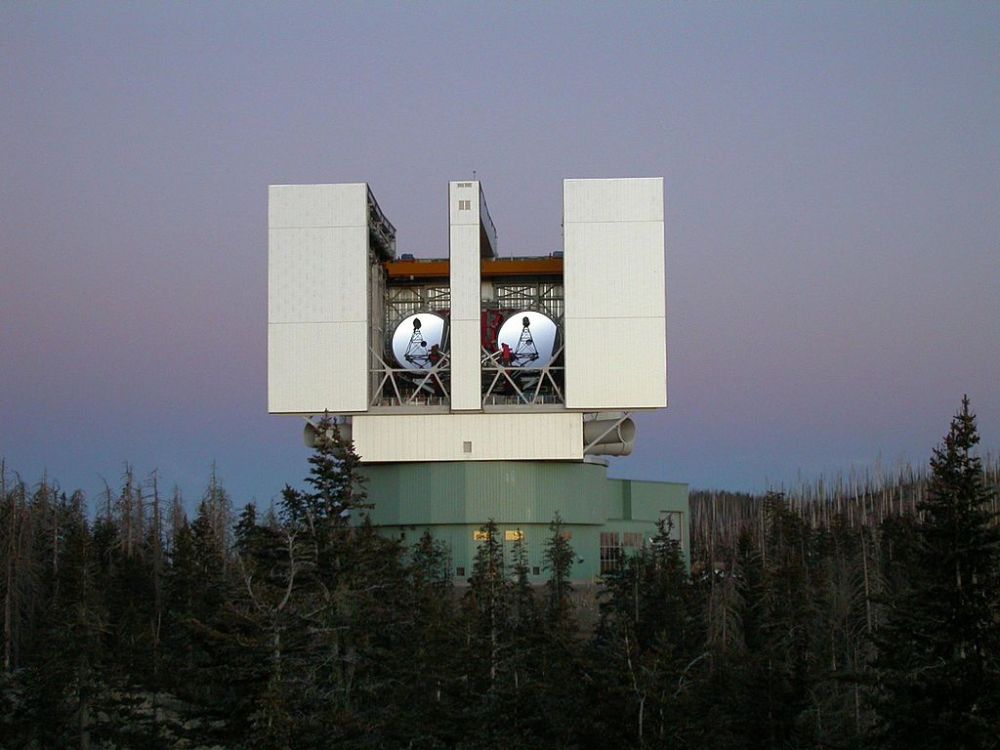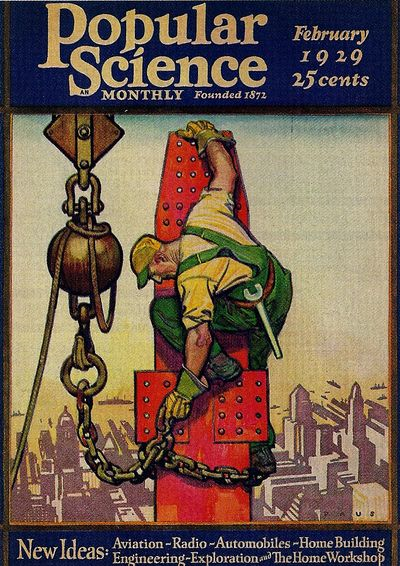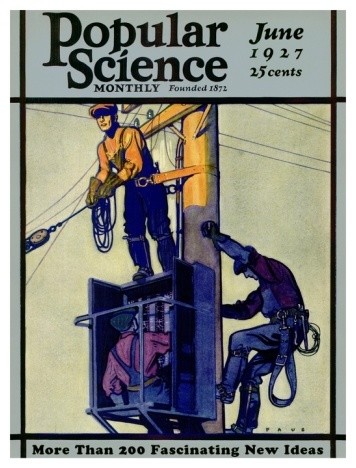Science
Atomic Energy Lab for Kids!

The Gilbert U-238 Atomic Energy Lab was a toy lab set that was produced by Alfred Carlton Gilbert, who was an American athlete, magician, toy-maker, business man, and inventor of the well-known Erector Set. The Atomic Energy Lab was released by the A. C. Gilbert Company in 1950. The kit’s intention was to allow children to create and watch nuclear and chemical reactions using radioactive material.
Background and development
Gilbert believed that toys were the foundation in building a “solid American character”, and many of his toys had some type of educational significance to them. Gilbert was even dubbed “the man who saved Christmas” during World War I when he convinced the US Council of National Defense not to ban toy purchases during Christmas time.
The Atomic Energy Lab was just one of a dozen chemical reactions lab kits on the market at the time. Gilbert’s toys often included instructions on how the child could use the set to put on his own “magic show”. For parents, he pushed the idea that the sets’ use of chemical reactions directed their children toward a potential career in science and engineering.
In 1954, Gilbert wrote in his autobiography, The Man Who Lives in Paradise, that the Atomic Energy Laboratory was “the most spectacular of [their] new educational toys”. Gilbert wrote that the Government encouraged the set’s development because it believed the lab would aid public understanding of atomic energy and emphasize its constructive aspects. Gilbert also defended his Atomic Energy Laboratory, stating it was safe, accurate, and that some of the country’s best nuclear physicists had worked on the project.

The lab contained a cloud chamber allowing the viewer to watch alpha particles traveling at 12,000 miles per second (19,000,000 m/s), a spinthariscope showing the results of radioactive disintegration on a fluorescent screen, and an electroscope measuring the radioactivity of different substances in the set.
Gilbert’s original promotions claimed that none of the materials could prove dangerous. The instructions encouraged laboratory cleanliness by cautioning users not to break the seals on three of the ore sample jars, for “they tend to flake and crumble and you would run the risk of having radioactive ore spread out in your laboratory. This will raise the level of the background count”, thus impairing the results of experiments by distorting the performance of the Geiger counter.
The Gilbert catalog copy included the reassurance that “All radioactive materials included with the Atomic Energy Lab have been certified as completely safe by Oak-Ridge Laboratories, part of the Atomic Energy Commission.”
The set originally sold for $49.503 (equivalent to $560 in 2021) and contained the following:
Battery-powered Geiger–Müller counter
Electroscope
Spinthariscope
Wilson cloud chamber with short-lived alpha source (Po-210) in the form of a wire
Four glass jars containing natural uranium-bearing (U-238) ore samples (autunite, torbernite, uraninite, and carnotite from the “Colorado plateau region”)
Low-level radiation sources:
beta-alpha (Pb-210)
pure beta (possibly Ru-106)
gamma (Zn-65)
“Nuclear spheres” for making a model of an alpha particle
Gilbert Atomic Energy Manual — a 60-page instruction book written by Dr. Ralph E. Lapp
Learn How Dagwood Split the Atom — comic book introduction to radioactivity, written with the help of General Leslie Groves (director of the Manhattan Project) and John R. Dunning (a physicist who verified fission of the uranium atom)
Prospecting for Uranium — a 1949 book published jointly by the Atomic Energy Commission and the United States Geological Survey
Three C batteries
1951 Gilbert Toys catalog
A product catalog described the set as follows: “Produces awe-inspiring sights! Enables you to actually SEE the paths of electrons and alpha particles traveling at speeds of more than 10,000 miles per SECOND! Electrons racing at fantastic velocities produce delicate, intricate paths of electrical condensation – beautiful to watch. Viewing Cloud Chamber action is closest man has come to watching the Atom! Assembly kit (Chamber can be put together in a few minutes) includes Dri-Electric Power Pack, Deionizer, Compression Bulb, Glass Viewing Chamber, Tubings, Power Leads, Stand, and Legs.”
Among other activities, the kit suggested “playing hide and seek with the gamma ray source”, challenging players to use the Geiger counter to locate a radioactive sample hidden in a room.
Criticism
In 2006, the pop culture publication Radar Magazine called the lab set one of “the 10 most dangerous toys of all time, … exclud[ing] BB guns, slingshots, throwing stars, and anything else actually intended to inflict harm”, because of the radioactive material it included (it was number 2 on the list; number 1 was lawn darts).
The professional journal IEEE Spectrum published a more-detailed review in 2020, discussing the kit in the context of the history of science education kits and safety concerns. It described the likely radiation exposure as “minimal, about the equivalent to a day’s UV exposure from the sun”, provided that the radioactive samples were not removed from their containers, in compliance with the warnings in the kit instructions.
The Bulletin of the Atomic Scientists published a brief article on the web, which featured Voula Saridakis, a curator at the Museum of Science and Industry (Chicago) hosting a detailed video tour of the Atomic Energy Lab components. She concluded by saying that the kit failed to sell because of its high price, and not due to any safety concerns at the time.
Legacy
Unlike other A.C. Gilbert Company chemistry sets, the Atomic Energy Lab was never popular and was soon taken off the shelves. Fewer than 5,000 kits were sold, and the product was only offered in 1950 and 1951. Gilbert believed the Atomic Energy Lab was commercially unsuccessful because the lab was more appropriate for those who had some educational background rather than the younger crowd that the A.C. Gilbert Company aimed for. Columbia University purchased five of these sets for their physics lab.
Tu Youyou
Tu Youyou (Chinese: 屠呦呦; pinyin: Tú Yōuyōu; born 30 December 1930) is a Chinese pharmaceutical chemist and malariologist. She discovered artemisinin (also known as qīnghāosù, 青蒿素) and dihydroartemisinin, used to treat malaria, a breakthrough in twentieth-century tropical medicine, saving millions of lives in South China, Southeast Asia, Africa, and South America.
For her work, Tu received the 2011 Lasker Award in clinical medicine and the 2015 Nobel Prize in Physiology or Medicine jointly with William C. Campbell and Satoshi Ōmura. Tu is the first Chinese Nobel laureate in physiology or medicine and the first female citizen of the People’s Republic of China to receive a Nobel Prize in any category. She is also the first Chinese person to receive the Lasker Award. Tu was born, educated and carried out her research exclusively in China.

Green Bank, West Virginia, population 143, the quietest town in America: no cell phones, Wi-Fi, television or radio
Green Bank, in Pocahontas County in West Virginia, the United States, is possibly one of the quietest residential places on earth. There is no cell phone reception here, no Wi-Fi, not even radio or television. But Green Bank is not technologically backward. On the contrary, it’s home to the world’s largest fully steerable radio telescope on earth – the Robert C. Byrd Green Bank Telescope (GBT). The GBT is the reason why this town is electromagnetically silent.
The telescope is the world’s largest fully steerable radio telescope, surpassing the Effelsberg 100-m Radio Telescope in Germany. The Green Bank site was part of the National Radio Astronomy Observatory (NRAO) until September 30, 2016. Since October 1, 2016, the telescope has been operated by the independent Green Bank Observatory. The telescope’s name honors the late Senator Robert C. Byrd who represented West Virginia and who pushed the funding of the telescope through Congress.
Radio telescopes work by detecting electromagnetic waves that come from distant galaxies. These signals are so faint that the slightest emission of radio waves from electronic gadgets can interfere with the readings of the radio telescopes. For this reason, all cell phones, Wi-Fi, radio and other communication devices are outlawed here. There are no cell phone towers for miles around, no music plays on the radio or soap operas on the television. Cable television is the only TV allowed.
The boundaries of the device-free zone extend far beyond Green Bank, covering an area roughly equal to 13,000–square-mile. This region is called the National Radio Quiet Zone, and is located around the sparsely populated countryside that straddles the borders of West Virginia, Virginia, and Maryland. Almost all types of radio transmissions and certain electronic devices are banned here so that the powerful Green Bank Radio Telescopes can work without disturbance. Green Bank happens to be the closest community to the Green Bank Telescope.
The tech-free life in Green Bank may seem impossible for those who can’t live without their cell phones, but for the 140-odd residents of the town, life is a bliss. Kids aren’t glued to the glowing screens of their mobile devices. They actually talk to each other instead of texting. Older residents roll down their car windows to greet each other and leave their front doors unlocked. If they must speak to someone out of town, there are pay phones.
The current telescope, completed in 2000, was built following the collapse of the previous Green Bank telescope, a 90.44 m paraboloid erected in 1962. The previous telescope collapsed on 15 November 1988 due to the sudden loss of a gusset plate in the box girder assembly, which was a key component for the structural integrity of the telescope.
Living under the shadow of the giant telescope, some of the residents are not even aware of the technological advances elsewhere.

“We didn’t realize the rest of the world was getting connected and staying connected constantly, via phones and computers and all that,” said radio host Caleb Diller, who grew up in Pocahontas County. “So we were kinda back in time a little bit. We hadn’t progressed to that.”
Over the last few years, many people have taken up residence in Green Bank. These people claim to suffer from electromagnetic hypersensitivity, or EHS—a disease not recognized by the scientific community. It’s said that people suffering from EHS get symptoms like dizziness, nausea, rashes, irregular heartbeat, weakness, and chest pains from electromagnetic radiations.
“Life isn’t perfect here,” said Diane Schou, one of the first “electrosensitive” immigrants who came to Green Bank with her husband in 2007. “There’s no grocery store, no restaurants, no hospital nearby. But here, at least, I’m healthy. I can do things. I’m not in bed with a headache all the time.” As of 2013, an estimated 36 people have moved to Green Bank to escape the effects of electromagnetic hypersensitivity.

The previous telescope
The GBT is fully steerable, and 85% of the entire celestial sphere is accessible. The structure weighs 8500 tons and stands 450 feet above ground. The surface area of the GBT is a 100 by 110 meter active surface with 2,209 actuators (a small motor used to adjust the position) for the 2,004 surface panels. The panels are made from aluminium to a surface accuracy of better than 0.003 inches (76 µm) RMS. The actuators adjust the panel positions to correct for distortions due to gravity which change as the telescope moves. Without this so-called “active surface”, observations at frequencies above 4 GHz would not be as efficient.



World’s Largest Telescopes
This list of the largest optical reflecting telescopes with objective diameters of 3.0 metres (120 in) or greater is sorted by aperture, which is one limit on the light-gathering power and resolution of a reflecting telescope’s optical assembly.
1.
The Gran Telescopio Canarias (GranTeCan or GTC), also known as the Great Canary Telescope is a 10.4 m (410 in) reflecting telescope located at the Roque de los Muchachos Observatory on the island of La Palma, in the Canaries, Spain.
Construction of the telescope, sited on a volcanic peak 2,267 metres (7,438 ft) above sea level, took seven years and cost €130 million (£112 million). Its installation had been hampered by weather conditions and the logistical difficulties of transporting equipment to such a remote location. First light was achieved in 2007 and scientific observations began in 2009.
The GTC Project is a partnership formed by several institutions from Spain and Mexico, the University of Florida, the Universidad Nacional Autónoma de México and the Instituto de Astrofísica de Canarias (IAC). Planning for the construction of the telescope, which started in 1987, involved more than 1,000 people from 100 companies.
As of 2015, it is the world’s largest single-aperture optical telescope. The distribution of the availability of time to use the telescope meets its financial structure: 90% Spain, 5% Mexico and 5% the University of Florida.

2.
The W. M. Keck Observatory is a two-telescope astronomical observatory at an elevation of 4,145 meters (13,600 ft) near the summit of Mauna Kea in the U.S. state of Hawaii. Both telescopes feature 10 m (33 ft) primary mirrors, currently among the largest astronomical telescopes in use. The combination of an excellent site, large optics and innovative instruments has created the two most scientifically productive telescopes on Earth.
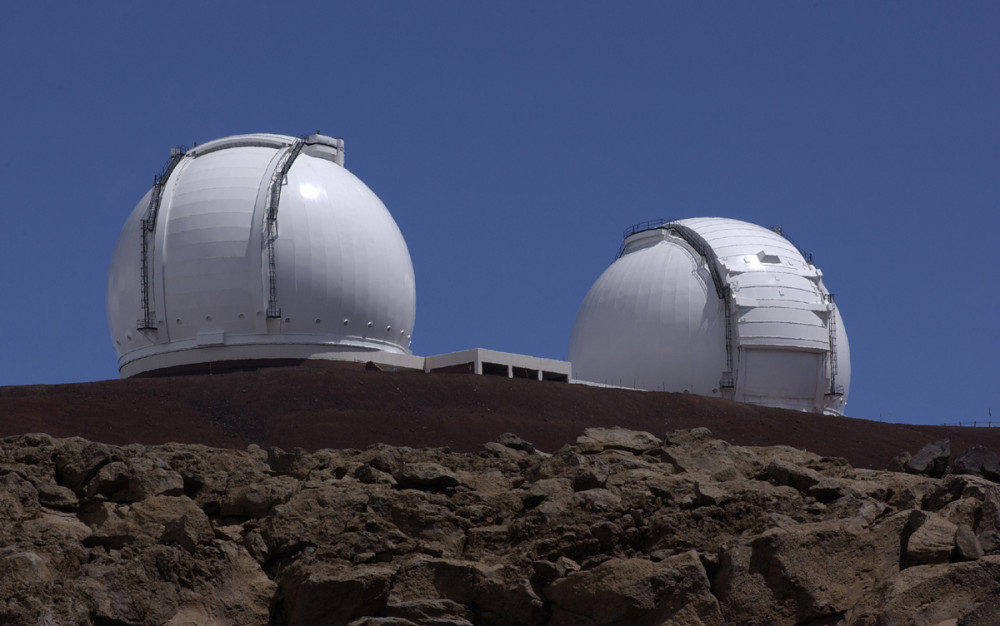
3.
The Southern African Large Telescope (SALT) is a 10-metre class optical telescope designed mainly for spectroscopy. It consists of 91 hexagonal mirror segments each with a 1 metre inscribed diameter, resulting in a total hexagonal mirror of 11.1 m by 9.8 m. It is located close to the town of Sutherland in the semi-desert region of the Karoo, South Africa. It is a facility of the South African Astronomical Observatory, the national optical observatory of South Africa.
4.
The Hobby–Eberly Telescope (HET) is a 9.2-meter (30-foot) aperture telescope located at the McDonald Observatory. It is one of the largest optical telescopes in the world and combines a number of features that differentiate it from most telescope designs, resulting in greatly lowered construction costs. For instance, the primary mirror is constructed from 91 hexagonal segments, which is less expensive than manufacturing a single large primary. Furthermore, the telescope’s main mirror is fixed at a 55° angle and can rotate around its base. A target is tracked by moving the instruments at the focus of the telescope; this provides access to about 70–81% of the sky at its location and allows a single target to be tracked for up to two hours.
The Hobby–Eberly Telescope is operated by The University of Texas McDonald Observatory for a consortium of institutions which includes The University of Texas at Austin, Pennsylvania State University, Stanford University, Ludwig Maximilians University of Munich, and Georg August University of Gottingen.
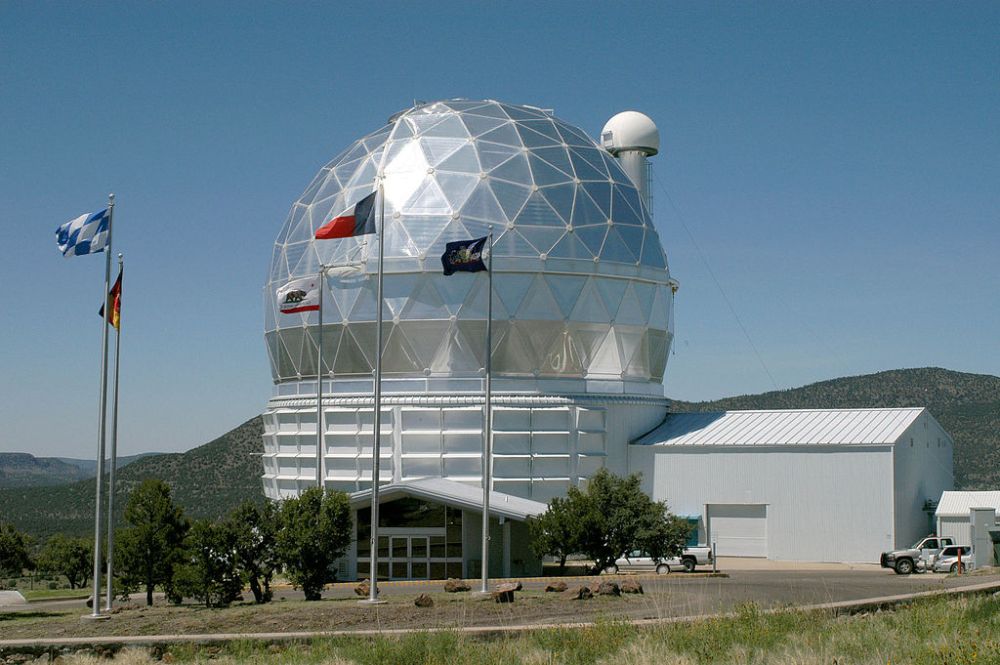
5.
The Large Binocular Telescope (LBT) is an optical telescope for astronomy located on Mount Graham (10,700-foot (3,300 m) in the Pinaleno Mountains of southeastern Arizona, and is a part of the Mount Graham International Observatory. The LBT is currently one of the world’s most advanced optical telescopes; using two 8.4 m (27 ft) wide mirrors, with a 14.4 m center-center separation, it has the same light gathering ability as an 11.8 m (39 ft) wide single circular telescope and detail of a 22.8 m (75 ft) wide one. Either of its mirrors would be the second-largest optical telescope in continental North America, behind the Hobby–Eberly Telescope in West Texas; as of summer 2014, it would still be the largest monolithic, or non-segmented mirror, in an optical telescope. Optical performance of the telescope is excellent, and Strehl ratios of 60–90% in the infrared H band and 95% in the infrared M band have been achieved by the LBT.
The LBT was originally named the “Columbus Project”. It is a joint project of these members: the Italian astronomical community represented by the Istituto Nazionale di Astrofisica, the University of Arizona; University of Minnesota, University of Notre Dame, University of Virginia, the LBT Beteiligungsgesellschaft in Germany (Max Planck Institute for Astronomy in Heidelberg, Landessternwarte in Heidelberg, Leibniz Institute for Astrophysics Potsdam (AIP), Max Planck Institute for Extraterrestrial Physics in Munich and Max Planck Institute for Radio Astronomy in Bonn); The Ohio State University; Research Corporation in Tucson.
6.
Subaru Telescope is the 8.2 metre flagship telescope of the National Astronomical Observatory of Japan, located at the Mauna Kea Observatory on Hawaii. It is named after the open star cluster known in English as the Pleiades. It had the largest monolithic primary mirror in the world from its commission until 2005.
In 1984, the University of Tokyo formed an engineering working group to study the concept of a 7.5-metre telescope. In 1985, the astronomy committee of Japan’s science council gave top priority to the development of a “Japan National Large Telescope” (JNLT), and in 1986, the University of Tokyo signed an agreement with the University of Hawaii to build the telescope in Hawaii. In 1988, the National Astronomical Observatory of Japan was formed through a reorganization of the University’s Tokyo Astronomical Observatory, to oversee the JNLT and other large national astronomy projects.
7.
The Very Large Telescope (VLT) is a telescope operated by the European Southern Observatory on Cerro Paranal in the Atacama Desert of northern Chile. The VLT consists of four individual telescopes, each with a primary mirror 8.2 m across, which are generally used separately but can be used together to achieve very high angular resolution. The four separate optical telescopes are known as Antu, Kueyen, Melipal and Yepun, which are all words for astronomical objects in the Mapuche language. The telescopes form an array which is complemented by four movable Auxiliary Telescopes (ATs) of 1.8 m aperture.
The VLT operates at visible and infrared wavelengths. Each individual telescope can detect objects roughly four billion times fainter than can be detected with the naked eye, and when all the telescopes are combined, the facility can achieve an angular resolution of about 0.001 arc-second (This is equivalent to roughly 2 meters resolution at the distance of the Moon). In single telescope mode of operation angular resolution is about 0.05 arc-second.
The VLT is the most productive ground-based facility for astronomy, with only the Hubble Space Telescope generating more scientific papers among facilities operating at visible wavelengths. Among the pioneering observations carried out using the VLT are the first direct image of an exoplanet, the tracking of individual stars moving around the supermassive black hole at the centre of the Milky Way, and observations of the afterglow of the furthest known gamma-ray burst.
8.
The Gemini Observatory is an astronomical observatory consisting of two 8.19-metre (26.9 ft) telescopes, the Gemini North and Gemini South at different sites in Hawaii and Chile, respectively. Together, the twin Gemini telescopes provide almost complete coverage of both the northern and southern skies. They are currently among the largest and most advanced optical/infrared telescopes available to astronomers.
The Gemini telescopes were built and are operated by a consortium consisting of the United States, Canada, Chile, Brazil, Argentina, and Australia. This partnership is managed by the Association of Universities for Research in Astronomy (AURA). The United Kingdom dropped out of the partnership at the end of 2012 and the Gemini Observatory has responded to this by significantly reducing its operating costs, so that no new partners are required beginning in 2013.
9.
The Magellan Telescopes are a pair of 6.5 m (21.3 ft) diameter optical telescopes located at Las Campanas Observatory in Chile. The two telescopes are named after the astronomer Walter Baade and the philanthropist Landon T. Clay.
First light for the telescopes was on September 15, 2000 for the Baade, and September 7, 2002 for the Clay.
A collaboration between Carnegie Institution for Science, University of Arizona, Harvard University, The University of Michigan and the Massachusetts Institute of Technology built and operate the twin telescopes.
It was named after the sixteenth-century Portuguese explorer Ferdinand Magellan.
10.
The BTA-6 is a 6-metre (20 ft) aperture optical telescope at the Special Astrophysical Observatory located in the Zelenchuksky District on the north side of the Caucasus Mountains in southern Russia.
The BTA-6 achieved first light in late 1975, making it the largest telescope in the world until 1990, when it was surpassed by the partially constructed Keck 1. It pioneered the technique, now standard in large astronomical telescopes, of using an altazimuth mount with a computer-controlled derotator.
For a variety of reasons, BTA-6 was never able to operate near its theoretical limits. Early problems with poorly fabricated mirror glass were addressed in 1978, fixing the most serious issue. But due to its location down-wind of numerous large mountain peaks, astronomical seeing is rarely good. The telescope also suffers from serious thermal expansion problems due to the large thermal mass of the mirror, and the dome as a whole which is much larger than necessary. Upgrades have taken place throughout the system’s history and are ongoing to this day.
The Large Binocular Telescope
The Large Binocular Telescope (LBT) is an optical telescope located on Mount Graham at an altitude of 3,200 meters in the Pinaleno Mountains of southeastern Arizona. Its design was inspired by the more modest optical equipment we usually carry around the neck. The Large Binocular Telescope has two identical 8.4 m telescopes mounted side-by-side on a common base that has the same light gathering ability as an 11.8 m wide single circular telescope and the resolving power of a 22.8 m wide one. The binocular design, combined with advanced adaptive optics, gives the telescope exceptional sensitivity for the detection of faint objects. The LBT is currently one of the world’s highest resolution and most technologically advanced optical telescopes.
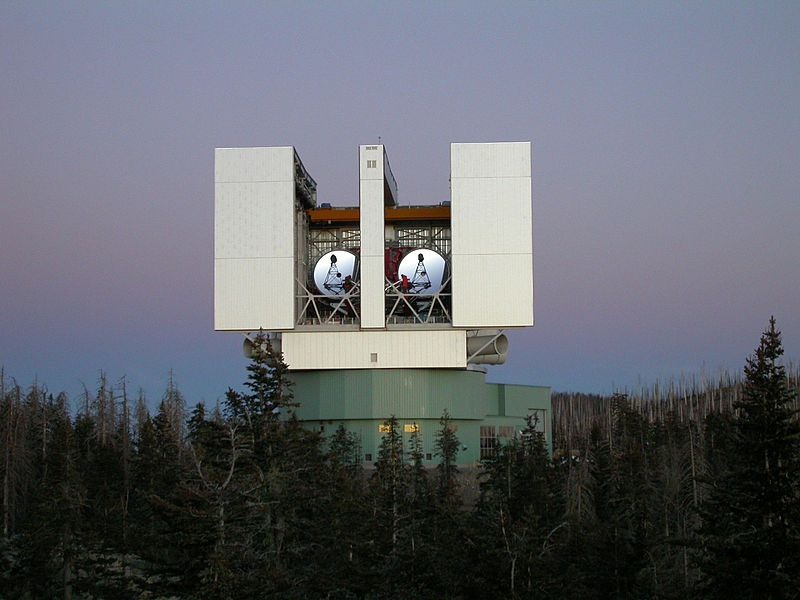
Especially praiseworthy is the adaptive optics device, called the First Light Adaptive Optics system. Traditional ground based telescope has to see through the Earth’s thick atmosphere that absorbs a significant amount of light before it reaches the telescope’s mirrors. But the real problem is wavefront distortion caused by atmospheric instability that distorts the light passing through much the way water blurs the view from the bottom of a swimming pool.
To correct atmospheric distortion, astronomers use adaptive optics technology. The LBT has a very thin secondary mirror that can be easily deformed by devices pushing on the 672 tiny magnets glued to its back. A special wavefront sensor measures atmospheric distortions in real time. A computer then calculates the optimal mirror shape required to correct the distortions and the surface of the mirror is suitably adjusted to compensate the distortion. The mirror can make adjustments every one-thousandth of a second, with accuracy to better than ten nanometers.
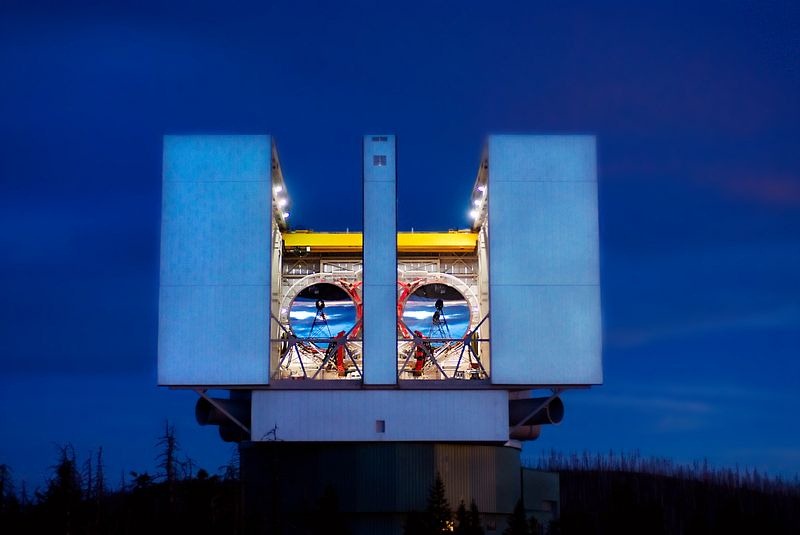
Image sharpness is measured in Strehl ratio, where 100 percent represents a perfect image. In the initial testing phase, the LBT’s adaptive optics system achieved unprecedented Strehl Ratios of 84 percent, when existing adaptive optics systems on other major telescopes today score between 30 percent to 50 percent in the near-infrared wavelengths where the testing was conducted.
“The results on the first night were so extraordinary that we thought it might be a fluke, but every night since then the adaptive optics have continued to exceed all expectations,” said astronomer Simone Esposito,of the Istituto Nazionale di Astrofisica (INAF) who collaborated with the University of Arizona’s Steward Observatory to build the adaptive optics device. “These results were achieved using only one of LBT’s mirrors. Imagine the potential when we have adaptive optics on both of LBT’s giant eyes.”
When compared to images taken by the Hubble Space Telescope, LBT’s images were three times as much sharper. When light from both mirrors are combined, the LBT is expected to achieve image sharpness ten times that of the Hubble.


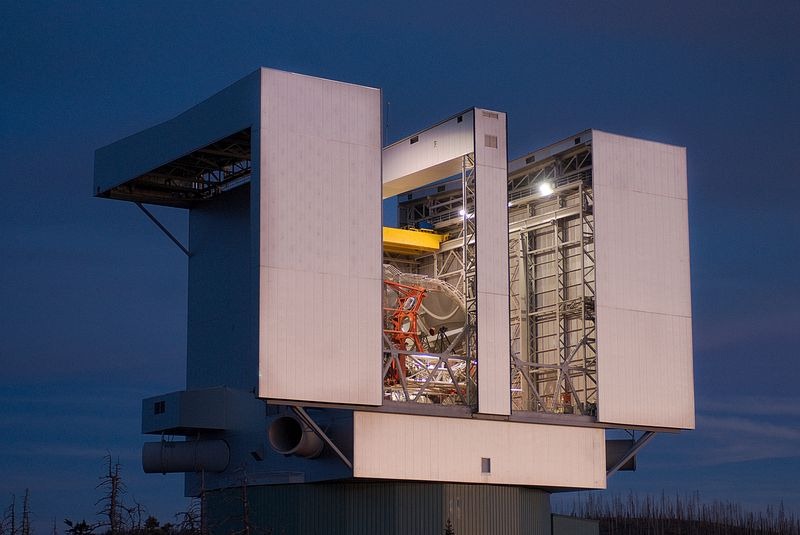
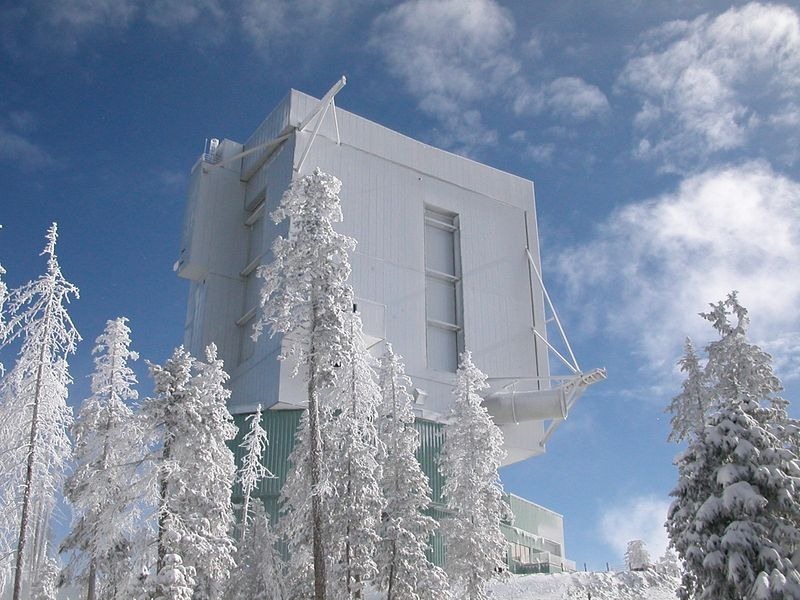
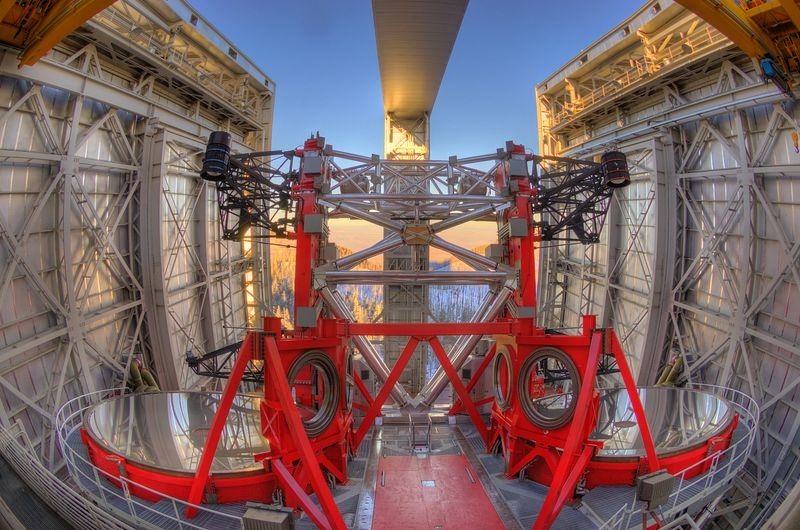

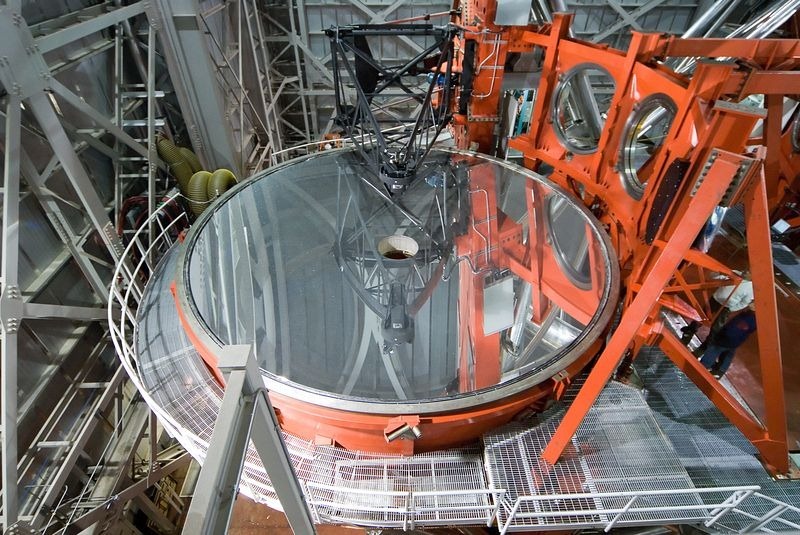

Shark researchers size up real ‘Megalodon’ for first time

The enormity of a prehistoric mega-shark made famous in Hollywood films has finally been revealed by researchers.
Until now, only the length of the Otodus Megalodon, as featured in the 2018 film The Meg, had been estimated from fossils of its teeth.
However a team from Swansea and Bristol universities have combined maths with nature to reveal just how big it was.
The study has been published in the journal Scientific Reports.
Researchers used mathematical methods and comparisons with living relatives to find the overall size of the megalodon, which lived from about 23 million to three million years ago.
Results suggest a 16m (52ft) megalodon – almost three times as long as a great white shark – is likely to have had a head about 4.65m (15ft) long, a dorsal fin as large as an entire adult human and a tail about 3.85m (13ft) high.
Jack Cooper, who is to study a PHD in palaeobiology at Swansea University, described the research as his “dream project”.
“Megalodon was the very animal that inspired me to pursue palaeontology but studying the whole animal is difficult considering all we really have are lots of isolated teeth,” he said.

“It’s significant that we have now been able to produce estimates of proportions and dimensions of the body parts when there are no fossils to go off.
“However the dimensions in the film were actually pretty accurate.”
Previously, the shark was only compared with the great white, but the latest analysis was expanded to include five modern sharks, including the makos, salmon shark and porbeagle shark.
Mr Cooper added: “We could take the growth curves of the five modern forms and project the overall shape as they get larger and larger – right up to a body length of 16 metres.”
![green-bank-virginia-24[6]](https://markosun.files.wordpress.com/2015/01/green-bank-virginia-246.jpg?w=1000)




